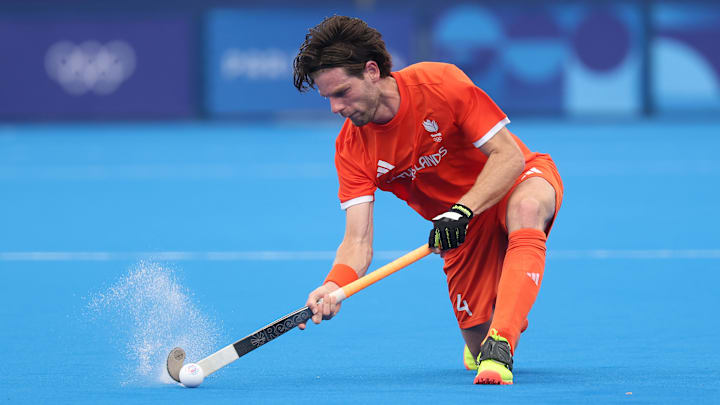The slow-motion replays during Olympic field hockey games give viewers new to the sport a great chance to notice something strange about the field: It’s always soaking wet, even when the weather’s clear.
This is par for the course in high-level field hockey, and it’s been that way since the 1970s. There are several reasons why watered turf is preferable to dry turf (which is often filled in with sand). One is for safety: Sliding across wet turf is smoother, and that lack of friction helps cut down on turf burn. According to turf manufacturer TigerTurf, watered turfs are also better at absorbing impact, so it’s kinder on your body in general (especially should you fall).
The lack of friction is good for the ball, too. As NBC Sports explains, it “ensures crisper passes and fewer odd bounces of the ball.” In other words, without having to fight resistance between the ball and the turf—or having your pass interrupted when the ball bounces wildly off track or way too high—the whole game becomes more seamless. The International Hockey Federation sums it up like this: “Watering provides a fast, predictable, and consistent playing surface that allows the players to perform to their best ability.”

But watered turf comes with a serious setback—it uses a ton of water. According to turf supplier GreenFields, irrigating the pitch for one hockey match requires an average of 6000 liters (roughly 1585 gallons) of water, which is “enough drinking water for a 3-person household for 6.5 years.”
The sport has shown a commitment to cutting back on water consumption. In 2018, the International Hockey Federation launched a “Dry Turf Initiative” to push manufacturers to develop better dry turf that can replace wet turf. Organizations have also innovated new kinds of wet turf made from more sustainable materials that require less water. At the 2021 Tokyo Summer Olympics, for example, the Poligras hockey turf comprised 60 percent sugarcane and used 39 percent less water than its predecessor at the 2016 Games in Rio de Janeiro.
Poligras kicked it up a notch for Paris 2024 with a carbon-neutral turf comprising 80 percent sugarcane. According to its website, “light rain or dew on a cool night” can sometimes “be enough to transform the turf to Olympic level performance.” (But Olympic officials have done some manual watering in Paris.)
